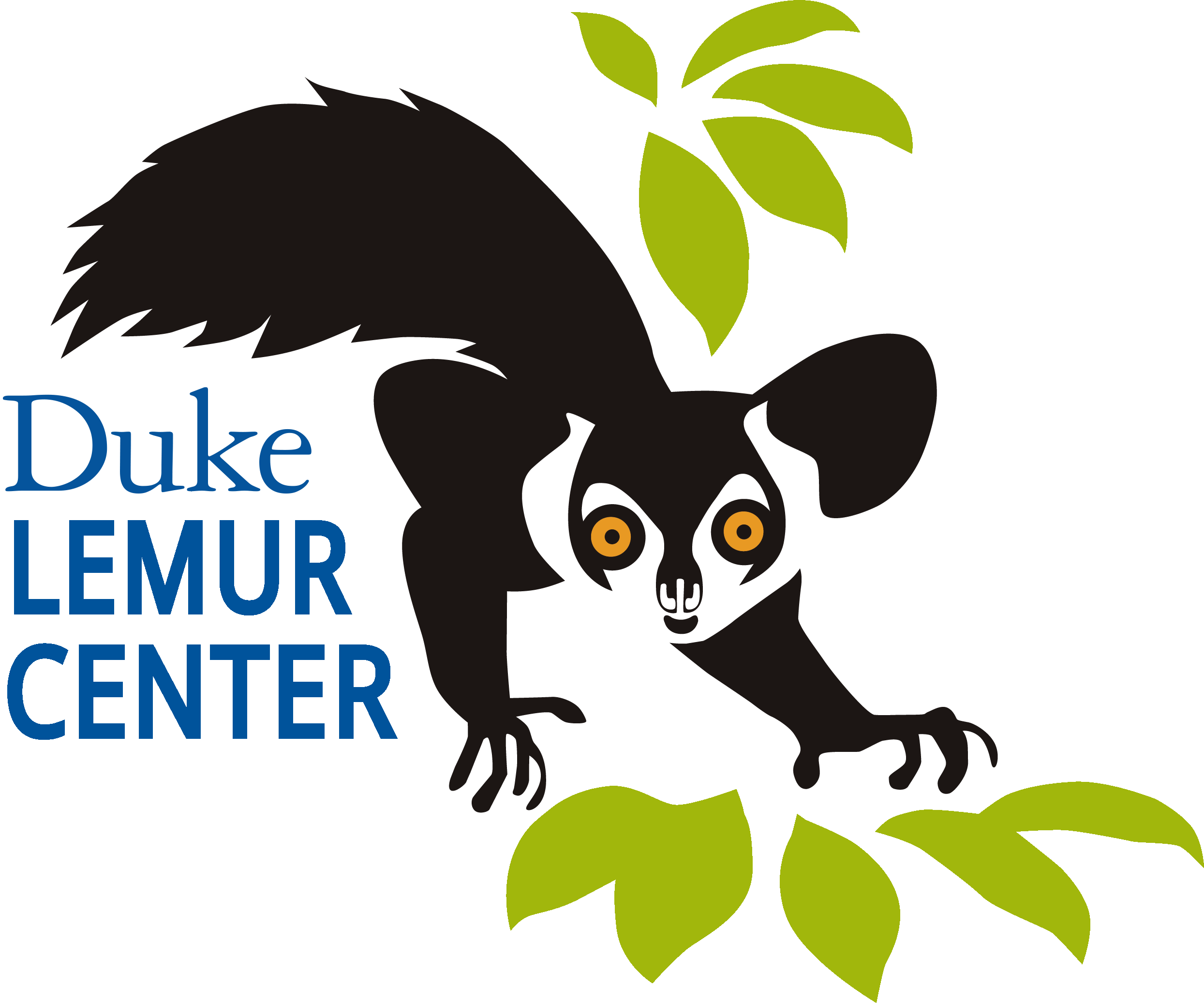By James Herrera, Ph.D. and DLC staff. Posted July 20, 2025.
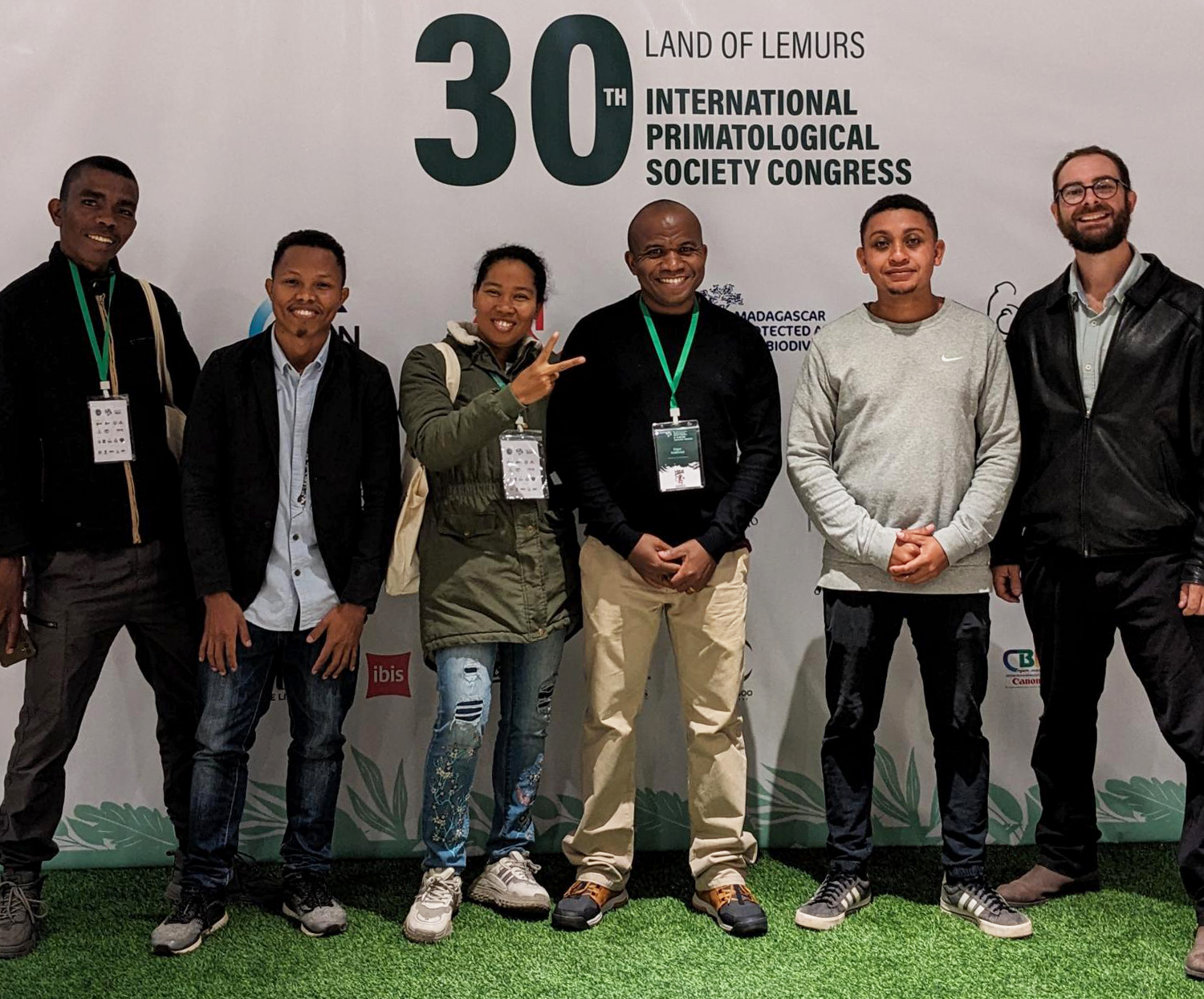
Six members of the DLC-SAVA Conservation team had papers accepted to be presented to the delegation. After years of research and preparation, they’re excited to share their results with the international community! Left to right: Evrard Benasoavina, Candidier Dimbiranijaonina, Dr. Marie Rolande Soazafy, Edgar Rabevao, Romeo Bezaralahy, and Dr. James Herrera.
This week, the 30th International Primatological Society (IPS) Congress is proudly being hosted by Madagascar, for the first time since 1998!
The IPS is dedicated to the study, conservation, and welfare of primates in the wild and within human care. Its biannual Congress is a cornerstone in the field of primatology and brings together scientists, conservationists, educators, and policymakers from around the globe to discuss and advance primate research and conservation.
Six members of the DLC-SAVA Conservation team had papers accepted to be presented to the delegation. After years of research and preparation, they’re excited to share their results with the international community!
Daily Updates
Follow our updates this week from James Herrera, Ph.D., the DLC’s Director of Conservation:
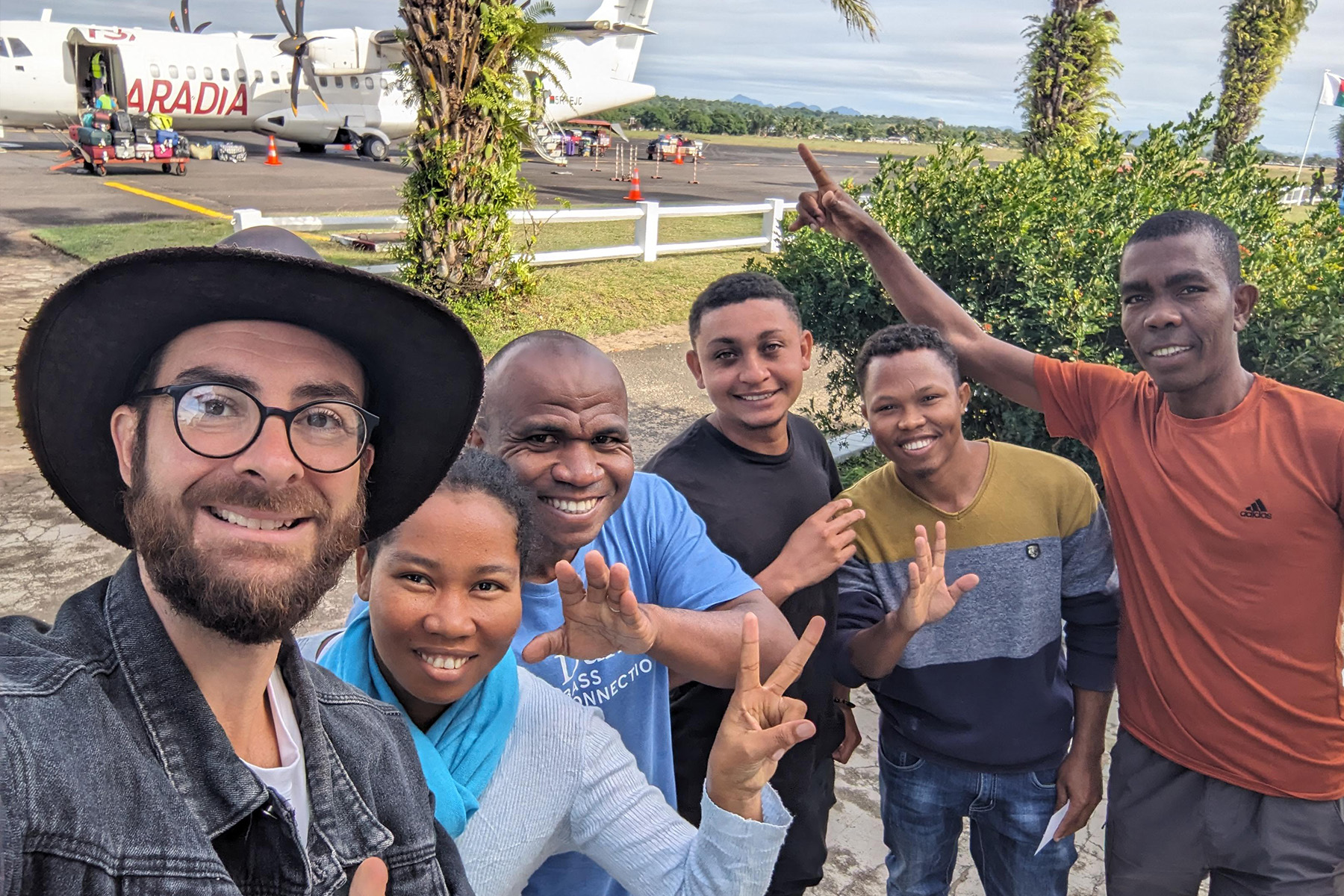
James, Rolande, Edgar, Romeo, Candidier, and Evrard arrived at the Congress in Antananarivo on July 20, 2025.
July 20, 2025—The DLC-SAVA Conservation team has arrived in Antananarivo, Madagascar’s capital city, where this year’s Congress is taking place. The opening reception will be held this evening, with scientific sessions from July 21-25.
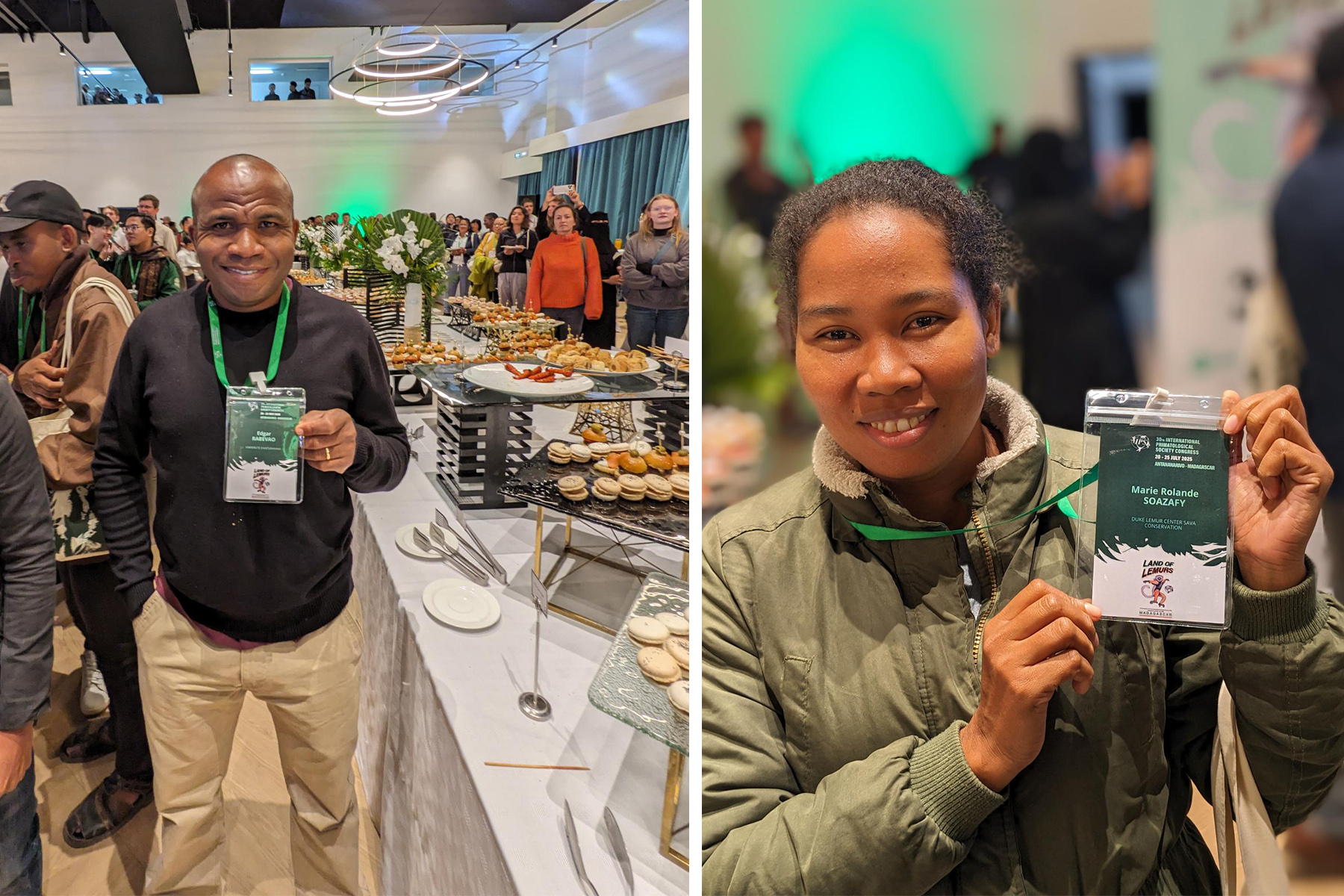
Edgar and Rolande at the opening reception.
July 21, 2025—The first day of the IPS Congress was full of inspiring science and hopeful messages for lemur conservation. A full day of sessions focused on conservation efforts in Madagascar and globally, sharing challenges and innovative solutions. Candidier Dimbiranijaonina presented his research on lemur hunting in the SAVA as well as community-driven actions to overcome obstacles to sustainability. James Herrera presented on our participatory process to conservation action planning. The talks sparked exchange with conservationists which gave us new ideas for our future work. Great symposium on flagship species for promoting conservation messaging, new insights into primate genomics, and so much more!
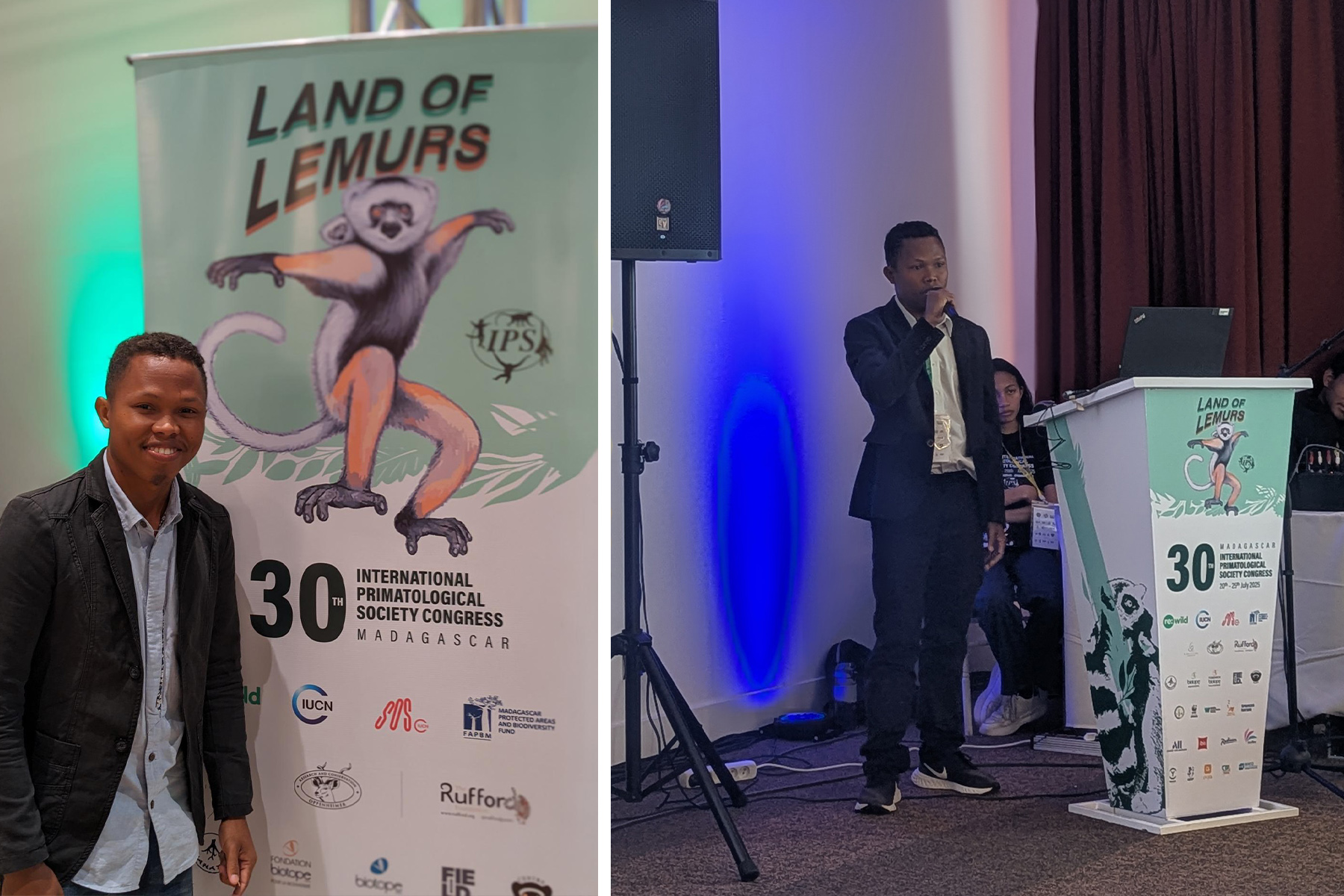
Candidier presenting his research on lemur hunting in the SAVA as well as community-driven actions to overcome obstacles to sustainability.
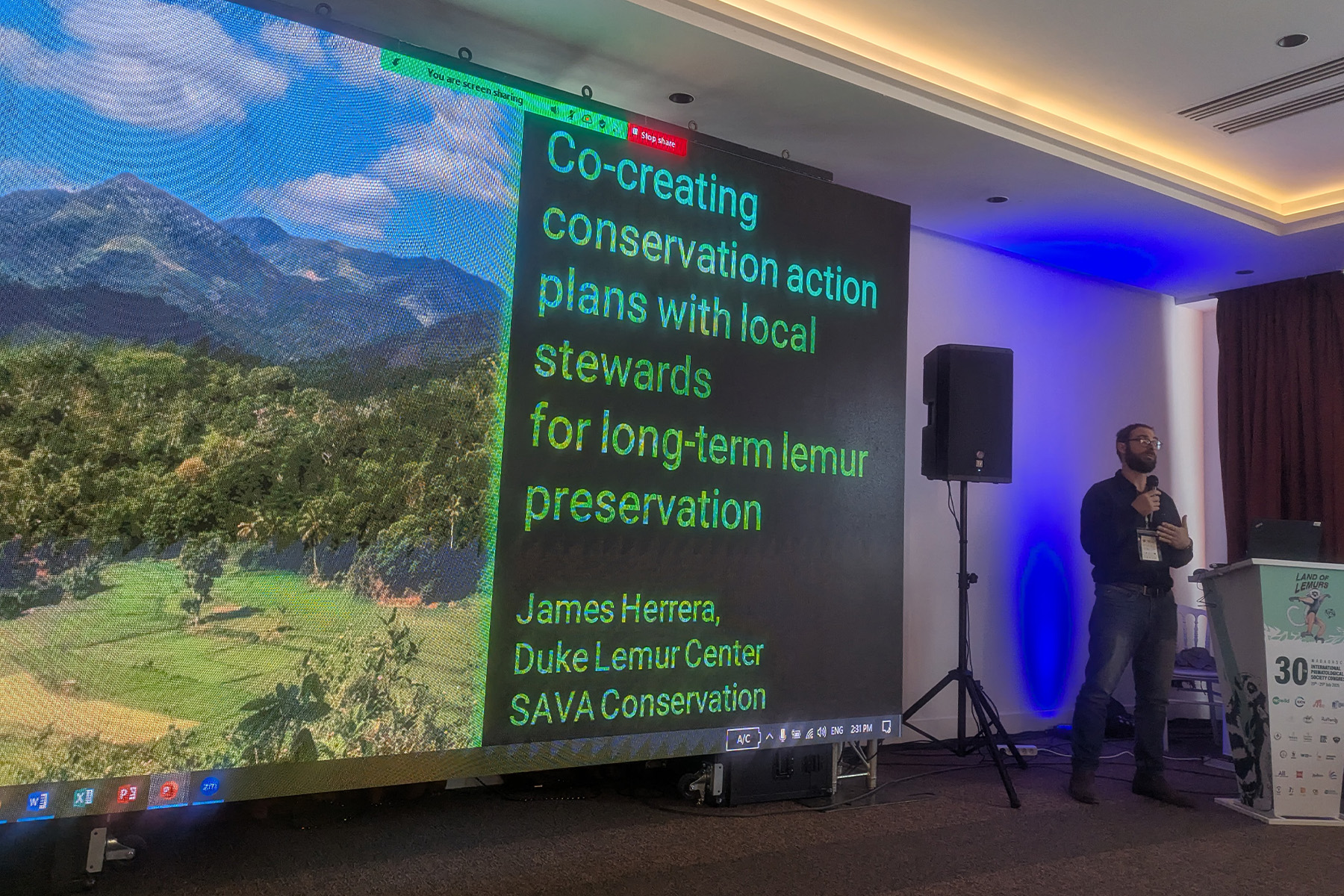
James presents on the DLC-SAVA Conservation team’s participatory process to conservation action planning.
July 22, 2025—A big day for primate conservation! Inspiring workshops and roundtables covering community-based conservation across the globe, the importance of long-term conservation for safeguarding endangered primates, and risks of diseases for people and non-human primates. Congratulations on a much-deserved Margot Marsh Award to IPS President Dr. Jonah Ratsimbazafy!
Critically, the evening was dedicated to assessing and updating the list of Primates in Peril: The World’s 25 Most Endangered Primates.
Good news: No primates have gone extinct in the last two years.
Bad news: Several species are on the brink of extinction. Among them are lemurs near and dear to our hearts at DLC: black and white ruffed lemurs and mongoose lemurs, among six others. These species are Critically Endangered and their inclusion is significant for our efforts in Madagascar and in Durham.
The DLC’s conservation breeding program is dedicated to preserving these species within human care. Further, the Lemur Center’s previous reintroduction of ruffed lemurs from Durham to Madagascar may have contributed to increasing genetic diversity, according to research presented at this Congress.
Once the new list is finalized, it is a powerful catalyst for raising awareness and funding, as well as actions to influence policy and practice. The DLC will do our part to take action and prevent the extinction of these vulnerable species.

Left: Black and white ruffed lemurs are among the 25 most endangered endangered primate species on Earth. Right: Edgar with IPS President Dr. Jonah Ratsimbazafy.
July 23, 2025—Another day of inspiring and innovative research on primates in Antananarivo! Today we heard more cause for hope, as leading lemur experts shared 10+ years of progress since the launch of the Lemur Conservation Action Plan in 2013. Tremendous efforts by dozens of Malagasy and international actors resulted in significant forest and lemur conservation. Huge praise for all who are making it happen!
DLC-SAVA Conservation researchers Edgar Rabevao and Romeo Bezaralahy presented their work on the links between lemurs and people. Edgar showed how the Critically Endangered silky sifaka is found at high densities in a few pockets of remote rainforests. Romeo presented about people’s knowledge of lemur food trees, which varied among communities and genders. Further, people depend on those same trees. This work is in collaboration with many colleagues and co-authors, especially Dr. Camille DeSisto (recent Duke NSOE graduate and current postdoc at Rice University) and Tristan Frappier-Brinton (Duke Biology Ph.D. candidate, also presenting at IPS), who contributed greatly. HUGE thank you to Duke Bass Connections, re:wild, Phipps Conservatory, and generous Lemur Center supporters for funding this work!

Edgar showed how the Critically Endangered silky sifaka is found at high densities in a few pockets of remote rainforests.

Romeo presented about people’s knowledge of lemur food trees, which varied among communities and genders.
July 24, 2025—Today the IPS honored Dr. Patricia Wright with a Lifetime Achievement Award, recognizing her commitment and fortitude in conservation and research. An incredible and diverse group spoke on the impact that Dr. Wright has had, with brilliant science and truly meaningful empowerment of Malagasy partners for conservation. Congratulations!
In her speech, Dr. Wright recalled her beginning with Duke Lemur Center, which she called a “cradle of wild lemur studies.”
We also want to extend our congratulations to Dr. Benjamin Andriamihaja, the Executive Director of MICET (Malagasy Institute pour la Conservation des Écosystèmes Tropicaux). MICET leads research and conservation as well as facilitating the work of hundreds of other scientists from around the world. The DLC and MICET have been collaborators for many years, and we are so happy to see the great results they’ve shared at the Congress.
In the afternoon, a fascinating and inspiring workshop was led by diverse actors on empowering scientists from primate range countries to be research and conservation leaders. For centuries, science and policy have been dominated by high-income countries, often at the expense of people from low-income settings. We need to flip the script by increasing equitable access to funding for locally led institutions, investing in regional research infrastructure, and increasing political power. Great initiative to all the organizers!

Dr. Patricia Wright was honored with a Lifetime Achievement Award by the IPS. In her speech, she recalled her beginning with Duke Lemur Center, which she called a “cradle of wild lemur studies.”
July 25, 2025—Wow! What an enriching five days of primate science! We are tired, but also inspired, ready to take what we’ve learned and apply it. Today, on the last day, three DLC team members presented their work and their performance was excellent. Postdoc Marie Rolande Soazafy presented on our investigation of landscape restoration. Environmental educator Evrard Benasoavina highlighted how our program is changing lives. Ph.D. candidate and DLC researcher Antonin Andriamahaihavana presented on lemur diversity in south Madagascar and was a wonderful moderator for the conservation session. Tomorrow and Sunday, Antonin will be presenting part of his Ph.D. project at the Mouse Lemur Workshop at the University of Antananarivo. Really special to see the turnout and exchange between projects around the world!
Dr. Jorg Ganzhorn presented and received the Outstanding Primatologist Award, highlighting the challenges and causes for hope for lemur conservation. A longtime Duke Lemur Center supporter, Dr. Ganzhorn has been leading lemur research and conservation for more than 30 years. It was an honor to see him speak.
Outside of Madagascar, great session on applying research for strategic conservation action planning around the world. Lemurs are great, but the challenges we face are global, so it is essential to learn how people are tackling obstacles in Vietnam, Amazonia, and Peru. Conservation leader Russ Mittermeier reminds us that lemurs are a global priority.
As always, the IPS Congress closed with an amazing ceremony honoring many Madagascar conservation leaders followed an awesome dance party. It was a great week and we look forward to seeing all our colleagues in China in 2027!

DLC researcher Antonin presented his project “Nocturnal Lemur Density and Distribution in Relation to Tree-Fall Canopy Gaps in the Masoala-Makira Landscape, Northeast Madagascar,” which was part of his master’s project. He also presented a project completed after his master’s degree, titled “Anthropogenic and Natural Disturbance Effects on Lemur Density and Distribution in Andohahela National Park, Southeast Madagascar.” During the weekend, he will present part of his Ph.D. project at the Mouse Lemur Workshop at the University of Antananarivo.
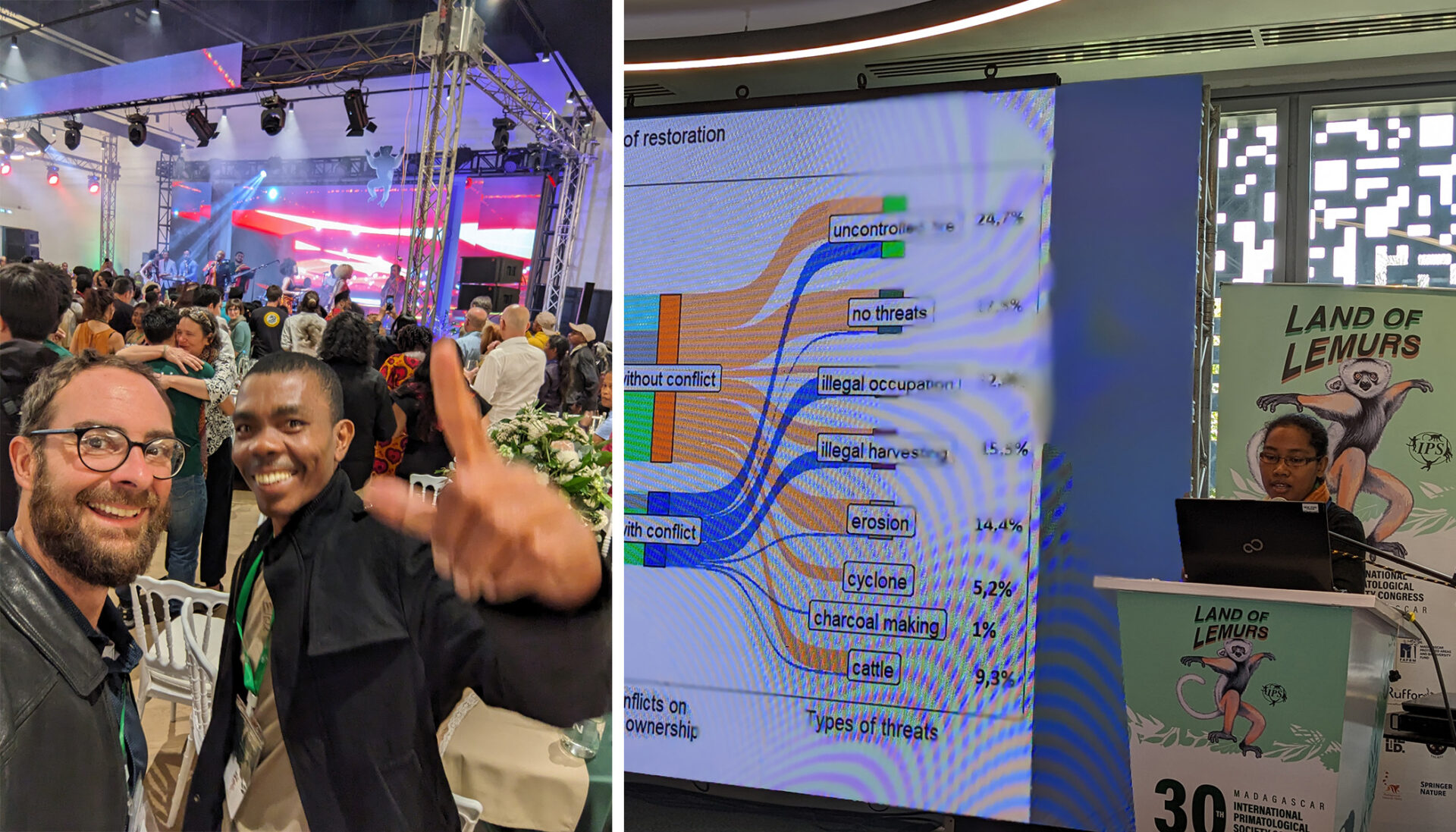
Environmental educator Evrard Benasoavina (left, with James) highlighted how the DLC-SAVA Conservation program is changing lives. Postdoc Marie Rolande Soazafy (right) presented on our investigation of landscape restoration.

Conservation leader Russ Mittermeier reminds us that lemurs are a global priority in primate conservation.

The DLC-SAVA Conservation team: Romeo, Edgar, Rolande, James, Candidier, and Evrard.
Support Our Work
The DLC’s conservation projects in Madagascar are funded entirely through grants and donations, so your contributions turn our conservation dreams into realities. Please consider supporting us with a tax-deductible donation today!
